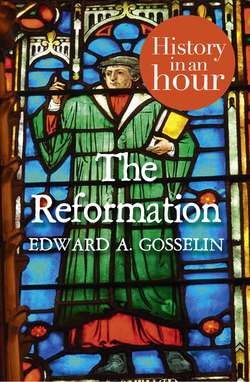Читать книгу The Reformation: History in an Hour - Edward Gosselin A - Страница 11
ОглавлениеEarly Sixteenth-Century Efforts at Reform
Attempts in the early sixteenth century to reform the Roman Catholic Church were led by, among others, Desiderius Erasmus of Holland and Jacques Lefèvre d’Étaples of France. They believed that the Church was guilty of pastoral neglect, sexual malfeasance and personal financial gain, but they had no intention of breaking with Rome or its papacy. They also believed that the laity should have more direct access to the Scripture within their own vernaculars. Bibles existed only in Latin according to Church dictate, and those who dared to publish the Bible in vernacular languages were turned over to secular authorities for punishment.
However, some highly placed people felt that the Bible should be accessible to all. In 1524, for example, Lefèvre d’Étaples (pictured below) was asked by Bishop Guillaume Briçonnet to introduce vernacular bibles in the district of Meaux, north-east of Paris. Bishop Briçonnet had, as support, Marguerite d’Angoulême, the sister of the French king, Francis I.
Engraving of Lefèvre d’Étaples
However, political conditions changed the reforms in Meaux. Francis I sought to control areas to which he had dynastic claims and thus he invaded Italy in 1525. After his defeat in February 1525 at the Battle of Pavia in northern Italy, Francis I was taken prisoner by the Emperor Charles V and brought to Spain for a year, thereby depriving Lefèvre of his royal protection. Theological enemies forced Lefèvre and his colleagues to close down their biblical work in Meaux and flee to Navarre (of which Marguerite d’Angoulême was now queen).
Desiderius Erasmus (pictured below), known as the greatest scholar of his age, was a contemporary of Lefèvre and twenty-one years older than Luther. Born in Rotterdam, he joined the Augustinian Order of monks, which he eventually left, and travelled throughout Europe as a welcome guest of royalty and other court figures. He published many influential books, including a Greek New Testament (1516), which became the basis for the work of other scholars and religious thinkers. Erasmus was also a pacifist, arguing that since Christ was the Prince of Peace, all Christians should be peaceful as well.
Portrait of Erasmus c.1523, by Holbein the Younger
Such men as Lefèvre and Erasmus wanted to restore the Roman Catholic Church to its original nature in the time of the Apostles. They believed that man is saved by both faith and his own good works. This idea was in accord with that of the late medieval Church and its belief that man is saved by the Church and his participation, as a believer, in the seven sacraments.
Lefèvre and Erasmus kept in close contact with the Catholic Church’s hierarchy and their work at reform was distinct from that of the Protestant reformers, although their influence is evident in the teachings of Luther and Zwingli as well as some of the more radical reformers.
